Please feel free to listen to this post, my first-ever voiceover!
When a bird chirps or a flower blooms, their sounds and colours feel like such a gift in an otherwise barren and still landscape. In winter, there are two flowers that are true gifts of the season—tsubaki and robai.
The Winter Blooms
Tsubaki, or camellia, is a beautiful flower that blooms in the winter months from late November and continues throughout the season. A winter-blooming flower! How very beautiful. If I were a flower, I would love to be a winter bloomer simply to defy the expectations of spring.
In the past, camellias were not just decorative; they played an essential role in daily life. Their wood was harvested for agricultural tools, while the seeds were pressed to make oils. Maybe you’ve heard of modern beauty products with tsubaki oil, but it was once a deeply traditional ingredient in Japanese skin and hair care.
The kanji for tsubaki (椿) is composed of 木 (tree) and 春 (spring), reflecting its deep association with the season. Historically, camellias were cherished as symbols of early spring in Japan, even more loved than sakura (cherry blossoms). Their vivid red and pink hues were loved by poets, writers, and tea masters. It wasn’t until after the Edo period (1600s-1800s) that sakura became the dominant symbol of spring.
If tsubaki is loved for its beautiful colors, then robai (蝋梅, wintersweet) makes its way to my heart through its fragrance. I could write poems about robai! I think we’d all write poetry if all we had time for was observing nature’s cyclical and intricate changes.
Robai blooms between the coldest and darkest months in late December to February. The name means “wax plum", which refers to the way its waxy petals resemble melting candle wax. Much like how we light up candles to bring light into darkness, these flowers are nature’s candles in cold months.
Unlike tsubaki’s bold and colourful presence, robai stays hidden until, suddenly, like popcorn, each bud pops open, filling the air with a scent like a soft vanilla candle—warm, honey, buttery, yet fresh.
In Japanese poetry, robai is often used as a metaphor for hidden beauty and quiet strength. Its sweet scent in the cold air offers a glimpse of warmth and light in the coldest season.
Snacks of the Season
Winter is also a season of patience, where time transforms different foods into something richer and more delicious.
Dried persimmons or hoshigaki (干し柿) is a beautiful example of patience turning something otherwise inedible into a delicacy. Unlike the more common sweet variety of persimmon that can be eaten raw, to make hosigaki, we take an astringent and bitter variety of a persimmon and hang them to dry for weeks. With time and care, the bitter persimmons undergo a radical transformation, becoming sooo sweet and creamy.
Roasted sweet potatoes are also a test of patience (far less time than a hosigaki but still, it’s some time in an oven). The Japanese variety, satsumaimo (さつまいも), is very different from the sweet potatoes I find in Canada. Here, they have a reddish-purple skin and a pale yellow interior that becomes creamy and almost custard-like when roasted.
In Kamikatsu, I walk to a local café before opening hours to use their wooden stove. Since the café owner is a close friend, I help start the fire—a quiet ritual of gathering logs, lighting fallen pine leaves, and watching as the small flame kisses the wood, growing into a gentle, glowing heat.
The warmth rises gradually, unnoticed at first, until suddenly, my cheeks are rosy from the fire’s embrace. Building warmth and a fire are more practices of patience.
Once roasted, the sweet potatoes are known as yaki imo. Every late autumn, I am excited at the first yaki-imo, and I enjoy them throughout the winter season. Many farmers will pull the sweet potatoes from the ground and store them in a cool cellar for a couple of months to age. So now is a wonderful time to get the sweet potatoes.
The surprise of charred mikan: another surprising, delicious roasted food is mikan (mandarin oranges). Like roasting a marshmallow over an open fire, we poke the mikan onto a stick and place them over the fire until their skin is completely charred.
If you have never tasted a roasted mikan, it’s wild! The flavors concentrate and bloom. It’s much juicier and sweeter than eating a raw mikan . Holding a freshly roasted mikan to your ear, you can hear a slight sizzling sound, like listening to a pot gently simmer. When you peel the skin open, the trapped heat releases into a soft, fragrant steam, like a warm, citrus bun.
In Japanese, we have a perfect onomatopoeia for this kind of warmth—hoka hoka (ほかほか). It describes food that is steamy and cozy, often used for freshly cooked rice. Roasted mikan is very hoka hoka.
Roasted mikan can also be made in an oven—I would love for you to try it as a comforting, simple treat for cold winter days. You can roast it in a toaster (flipping it over once around 3-5 minutes or until quite dark). If you put it in an oven, then 10 minutes should be enough.
As winter lingers, these gifts of the seasons—blooming tsubaki and robai, the patience of hoshigaki and yaki-imo, as well as the unexpected delight of roasted mikan—remind me that even in the coldest months, nature offers beauty and deep nourishment.
I’ll be off snacking for the rest of winter.
Thank you to everyone who became a paid subscriber in the past couple of weeks. I did a scary thing and turned on my paid subscriptions for those who can support me. Thank you from the bottom of my heart.
Those who decide to move to a paid subscription can receive seasonal postcards (spring edition) featuring photos taken by me and (mostly) my partner. He’s also the one behind these beautiful photos in my newsletters each week (supporting me means supporting us!)
🌷 Offering a small spring sale 25% off from now until April 1, 2025 🌷 If you want a spring-themed postcard, please join me before April 1!
Thank you, and have a lovely, warm rest of your week!
Kana


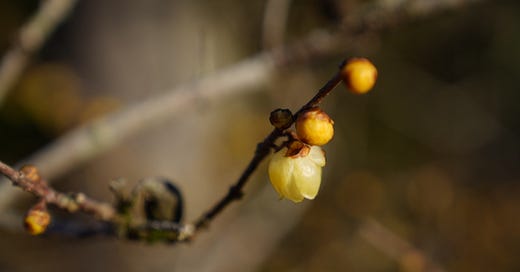



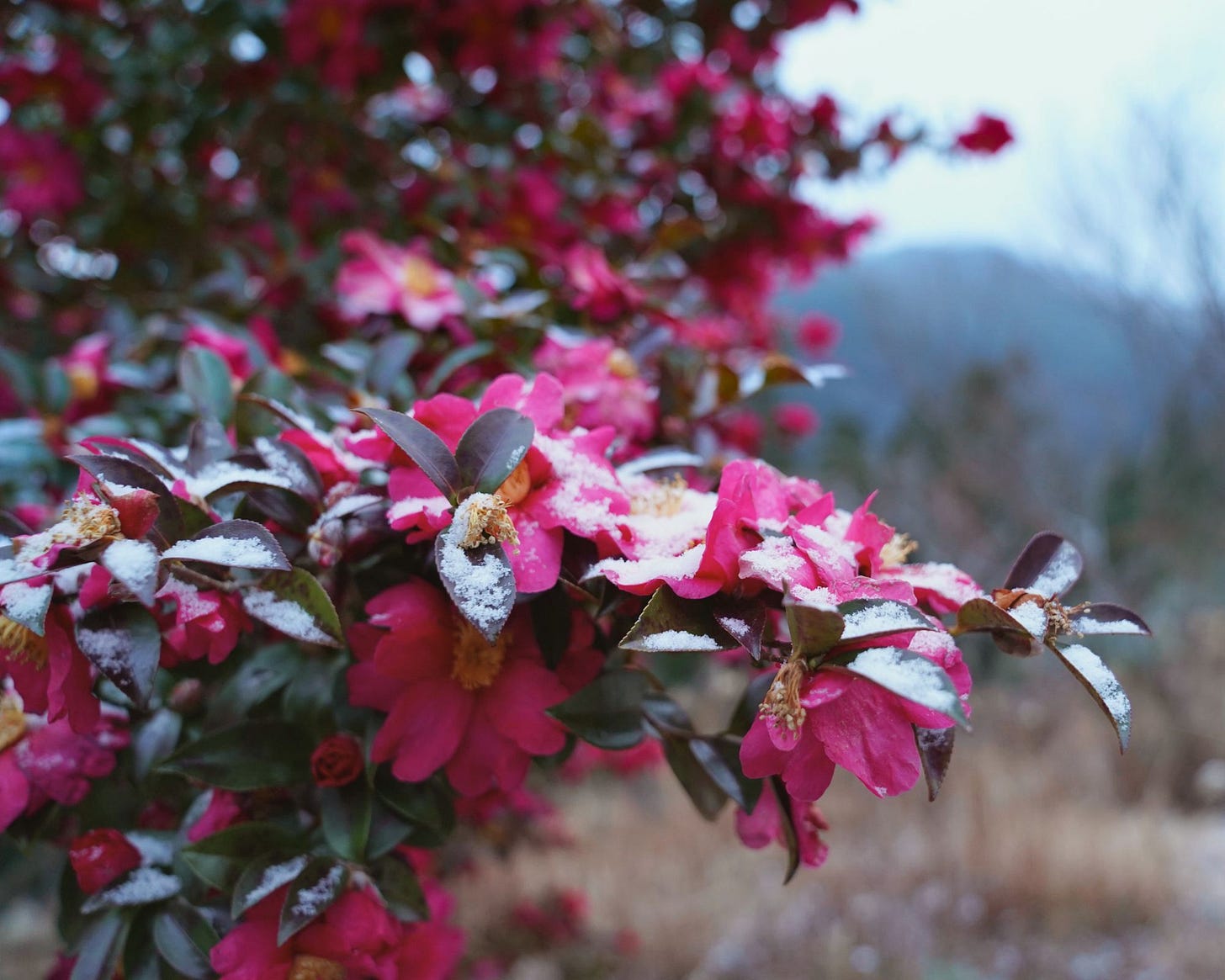
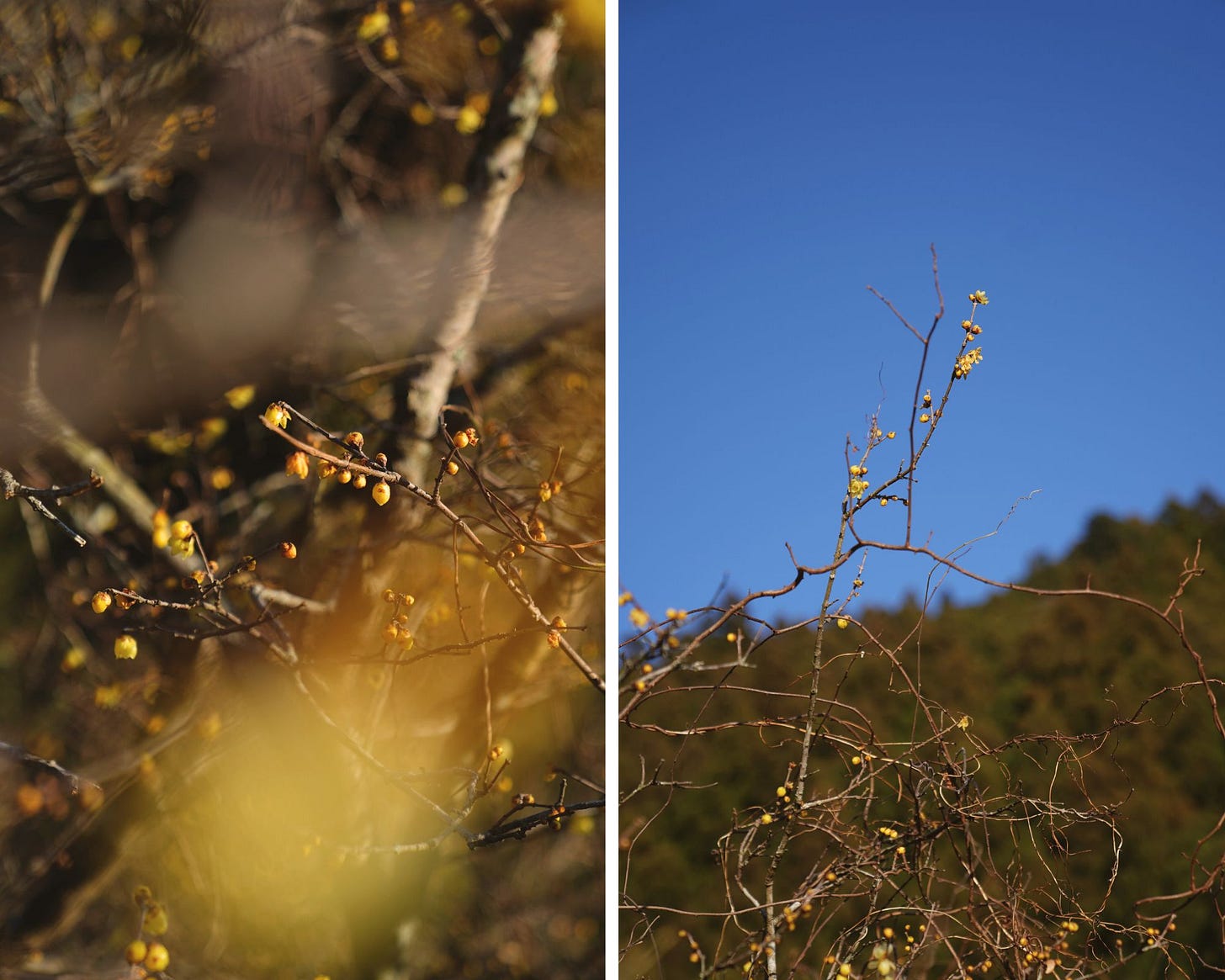
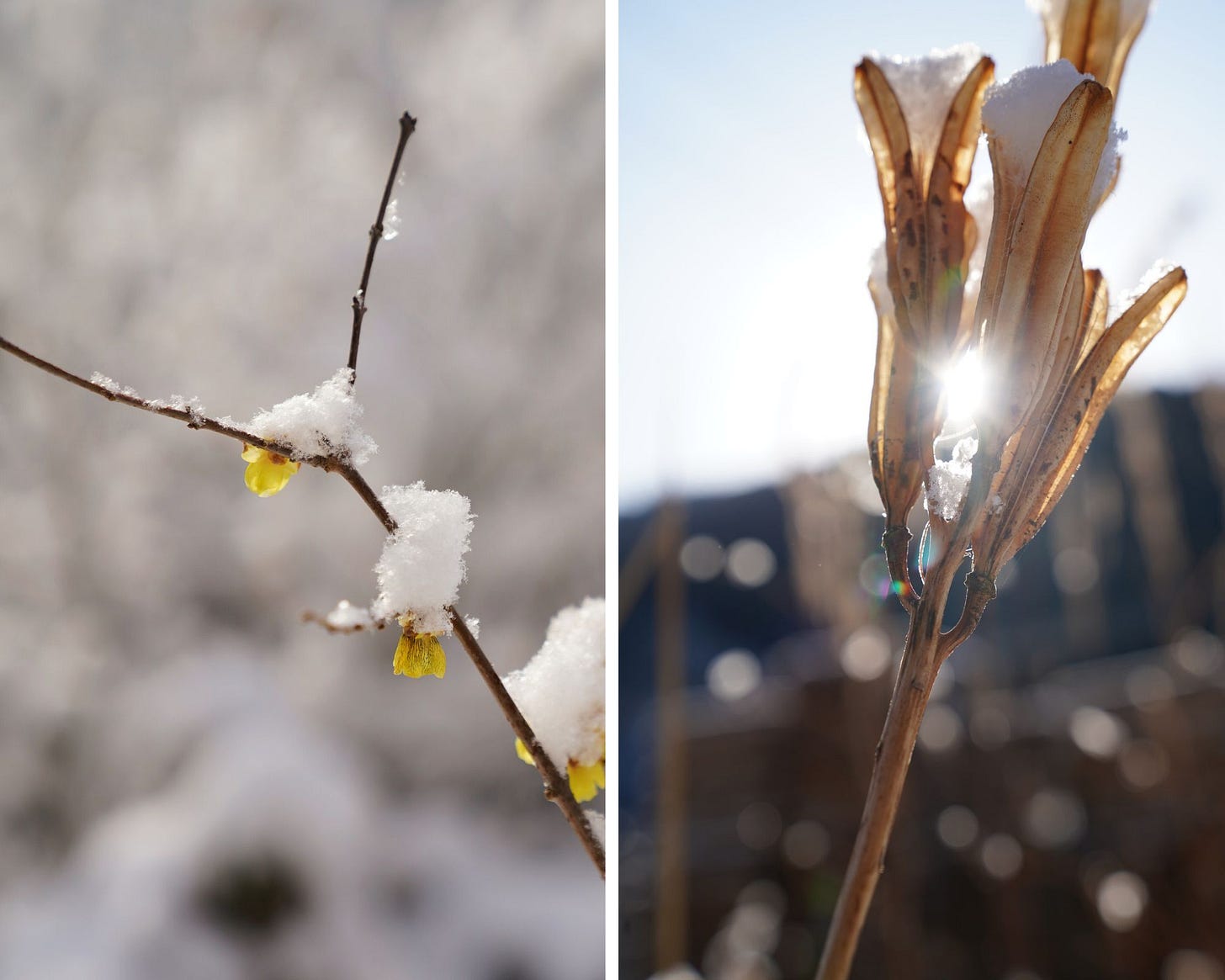

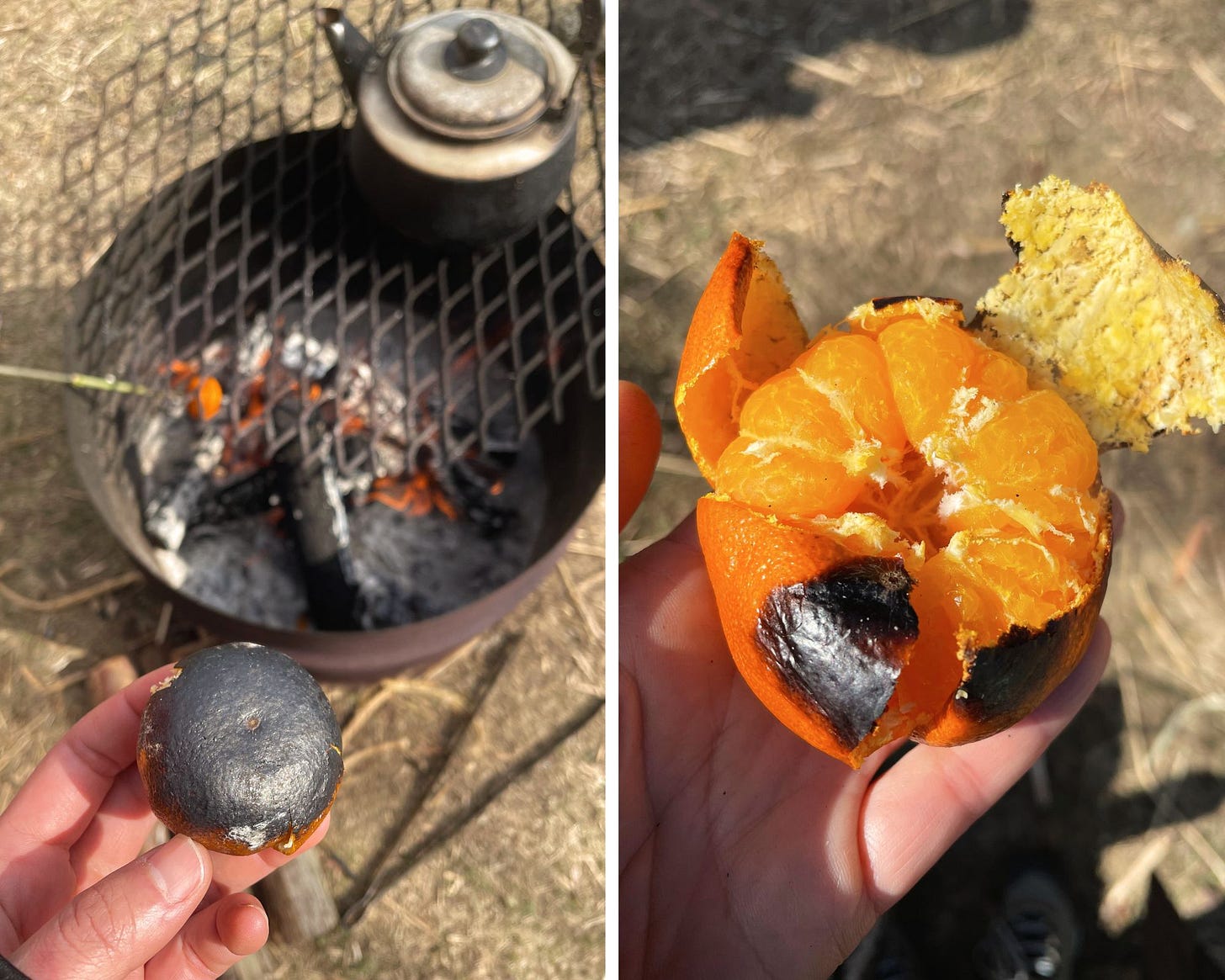
So lovely to hear your voice! I loved getting to listen as I read along. Thank you for sharing, Kana. Now off to roast some 'easy-peelers' in my oven...
Thank you - this is a beautiful post.